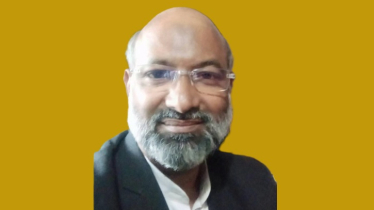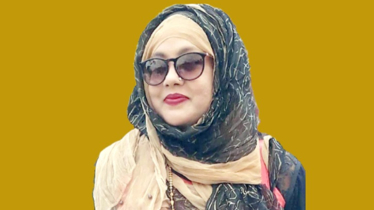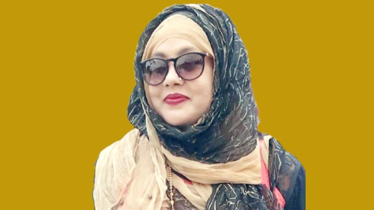
Photo: Collected
Reflecting on Mina's journey through adolescence as a college student, the resonance is palpable. Mina's experiences transcend the fictional realm, striking a chord with the challenges, triumphs, and self-discovery that characterize the college years.
I believe Mina's cartoon is not only a unique model for our college-going children but also a shining example of being a complete human being. Childhood is the phase between infancy and adolescence, marked by diverse definitions. "Adolescence" is a complex period encompassing physiological, psychosocial, and cultural aspects, typically spanning puberty to social independence. The World Health Organization defines adolescence as ages 10 to 19. Statistics show that in Bangladesh, where 28 million adolescents reside, 13.7 million are girls facing inequality, child marriage, and limited opportunities. Puberty brings physical and emotional changes, shaping self-identity and independence. Adolescent brains seek self-discovery through influences like gender, culture, media, and relationships.
Girls tend to distance themselves from parents, striving for independence. Risk-taking behaviors emerge, influenced by the exploration of sexuality and gender identity. Communication methods evolve, impacting social interactions. Boys undergo physical changes, experiencing voice deepening, facial hair growth, and increased strength. Hormones play a crucial role, with proper nutrition influencing development.
Sexual education is often lacking, leading to misinformation, risky behaviors, and vulnerability to sexual abuse. Open discussions between parents and teenagers are crucial. Awareness of reproductive health, prevention of sexually transmitted diseases, and understanding sexual abuse are vital for adolescent well-being. Establishing a friendly and open relationship with parents facilitates healthy decision-making and seeking help when needed. As interest in physical relations develops during puberty, the importance of effective sex education becomes evident. Unfortunately, some parents, unaware of their children's knowledge, resort to harmful alternatives like porn addiction. Encouraging open communication about the potential risks of early sexual activity is crucial for a healthier understanding.
Puberty is a pivotal time for personality development, and parents are advised to involve their children in family decisions and activities to foster respect and responsibility. Puberty is a specific process initiated by hormonal signals, with the duration varying based on factors such as country, culture, and lifestyle. Mental changes accompany physical transformations during puberty, with girls starting puberty earlier (around 9-14 years) than boys (11-17 years on average). Emotional changes are normal during this period, and parents are urged to be supportive friends guiding their children through these transformative years.
Adolescent development is viewed from various perspectives, including biosocial, organism, and contextuality . These perspectives acknowledge that development is influenced by genetically predetermined physiological changes, resembling stages of human evolution known as recapitulation. Understanding these perspectives can aid parents in guiding their adolescents through this complex phase of growth and change.
Let's explore the profound impact Mina's narrative has on those navigating the tumultuous waters of higher education.
1. Identity Evolution:
College is a pivotal time for identity exploration, and Mina's quest for self-discovery parallels the transformative nature of the college experience. As a college student, I recognize the parallel journey of seeking one's identity amid the myriad of academic, social, and personal opportunities.
2. Academic Pressures:
Mina's challenges in balancing academic responsibilities mirror the pressures faced by college students. The expectations to excel academically, make career-defining choices, and carve out a path for the future resonate deeply. Mina's journey becomes a mirror reflecting the importance of finding balance and coping with the demands of higher education.
3. Social Dynamics:
Navigating social circles and friendships in college mirrors Mina's exploration of relationships during adolescence. College students grapple with forming connections, maintaining friendships, and discovering who aligns with their evolving selves. Mina's experiences provide insights into the complexities of social dynamics and the significance of authentic connections.
4. Independence and Responsibility:
Mina's journey toward independence echoes the newfound freedom that college brings. College students, like Mina, learn to navigate the responsibilities of adulthood, making decisions that shape their futures. The narrative reinforces the idea that embracing independence comes with a learning curve and a need for responsible decision-making.
5. Mental Health and Well-being:
The emotional rollercoaster that Mina experiences underscores the importance of mental health awareness in college. Balancing academic stress, social expectations, and personal growth can be overwhelming. Mina's story serves as a reminder to prioritize mental well-being, seek support when needed, and recognize the significance of self-care during the college journey.
6. Career Exploration:
Mina's exploration of passions and career choices resonates with the college student's quest for a meaningful future. The narrative encourages a proactive approach to career exploration, embracing opportunities for growth, and navigating the uncertainties that come with forging a professional path.
7. Navigating Transitions:
As Mina grapples with the transitions in her life, so do college students face a multitude of changes. From transitioning to a new environment to contemplating post-graduation plans, Mina's story becomes a guide for navigating the uncertainties inherent in the college experience. Mina's impact on adolescence is not confined to the teenage years; it extends seamlessly into the realm of higher education. As a college student, Mina's journey serves as a source of inspiration, empathy, and guidance. The lessons learned from her narrative resonate deeply, offering insights into the intricate dance of identity, relationships, independence, and resilience that define the college experience. In embracing Mina's story, college students find a companion in their own journey of self-discovery and personal growth.
Mina, a fictional character whose journey resonates with countless adolescents, offers profound insights into the challenges and triumphs of this crucial life stage.
In exploring Mina's impact on adolescence, a myriad of valuable lessons emerge, weaving a narrative that resonates with the complexities of real-world experiences. These lessons transcend the fictional realm, fostering empathy, understanding, and personal growth among young individuals.
Mina's quest for self-discovery becomes a metaphor for the tumultuous journey of adolescence, where questions of identity loom large. The narrative underscores the significance of embracing individuality, guiding adolescents through the intricate process of self-discovery amid societal expectations.
Peer pressure, a ubiquitous challenge during adolescence, is illuminated through Mina's story. It provides a lens through which adolescents can learn to navigate choices aligned with their values, cultivating resilience and assertiveness. Mina becomes a beacon, guiding them toward healthy personal development.
The emotional rollercoaster of adolescence finds expression in Mina's journey, emphasizing the importance of emotional resilience. Through Mina's highs and lows, adolescents grasp the significance of well-being and coping mechanisms, learning that setbacks are integral to life's journey.
Friendship dynamics, portrayed through Mina's evolving relationships, serve as a microcosm of the complexities adolescents encounter. Loyalty, communication, and the selection of supportive individuals become focal points, contributing positively to their personal growth.
Mina's interactions with her family offer nuanced insights into the dynamics between adolescents and parents. Communication, understanding, and the gradual shift toward independence emerge as pivotal lessons, urging open dialogue to bridge generational gaps.
The uncertainty of adolescence, epitomized by Mina's journey, prepares young individuals for the unpredictable nature of adulthood. Embracing ambiguity, making decisions with incomplete information, and understanding life's non-linear path become crucial lessons for navigating the future.
In the face of adversity, Mina's resilience becomes a source of inspiration. Adolescents learn to perceive setbacks as opportunities for growth, internalizing the narrative's reinforcement that overcoming obstacles fosters strength and resilience.
Finally, we can say that Mina's impact on adolescence transcends fiction, offering a tapestry of lessons that guide young individuals through the intricate web of identity formation, peer pressure, emotional resilience, and interpersonal relationships. This narrative serves as a guide, imparting invaluable insights that contribute significantly to the personal development and growth of adolescents in the real world.

.png)







